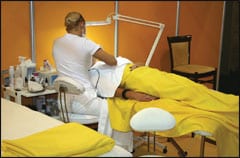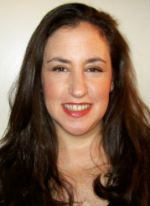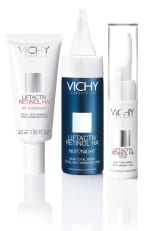 |
Personal quality of life is the most compelling reason physicians choose to specialize in plastic surgery or establish a cosmetic surgery practice.
For example, we retain control over our work schedules, we work with an upwardly mobile patient demographic, we don’t have to deal with managed care, and our compensation is based on the time and effort we invest in our business.
It’s a perfect world with one big caveat: A cosmetic business is directly impacted by economic cycles.
My cosmetic practice is now in its 21st year, and, in spite of the economic nightmare we are experiencing, my waiting room has never been fuller and I’m busier than I’ve ever been.
Whenever I say this to my colleagues, their first response is, “Sure, it must be easy when you have a practice in Beverly Hills and you have the media chasing you everywhere you go.”
I always welcome this conversation because I have strong feelings about what it takes to be a successful cosmetic surgeon. I acknowledge that luck has been on my side, but I attribute 95% of my success to hard work, imagination, and a burning entrepreneurial drive.
Additionally, I believe that other physicians can be as busy and successful as they want in whatever market they are in, regardless of economic cycles. The formula for success is to establish a “boutique practice” offering “boutique procedures.”
BE WILLING TO TAKE RISKS
My first boutique procedure, Laser Vaginal Rejuvenation® (LVR), was not originally developed as a cosmetic procedure. As a gynecologist, I had become sympathetic to the number of patients who complained to me about vaginal laxity and the impact it played in their diminished sexual satisfaction.
As I treated some of these women surgically for other functional problems, I began spending extra time in surgery repairing vaginal muscular structures. In response, my patients felt better and enjoyed sex as much as they did prior to having children. Suddenly, women who did not have other functional problems were showing up at my office asking me to do for them what I had done for their friends.
My entrepreneurial mind started seeing that this was more than simply a way to help women; it was also a business opportunity. I decided to see how far I could take it.
One of the first things I did was to enroll in an MBA program. Frankly, earning my MBA has been as important to me as my medical degree. I’m not saying that every cosmetic surgeon needs to get an MBA, but this is where I truly caught the vision of building a thriving practice and fleshed out the requirements for running a successful boutique procedure.
I trademarked the terms Laser Vaginal Rejuvenation and Designer Laser Vaginoplasty (DLV), started advertising the procedure, hired a PR firm, and got some good media placements. The patients started pouring through the door.
It was during this period that I learned the importance of having a highly skilled front office staff. The employees behind the desk are far more than receptionists and appointment schedulers; they are trained salespeople who understand my business and help develop relationships with patients. I compensate them according to the business they generate.
In addition, I made a big investment in my office space. A patient coming in for a boutique procedure has different expectations from the traditional OB/GYN patient who is on her third pregnancy. She also has different expectations about the amount of time she will be able to spend with me. A DMV-style physician’s office, in which a patient takes a number and waits in line for a 30-second appointment, does not work.
“SMART” EXPANSION
I spent the next few years happily treating my patients and building my brand. As media exposure grew, an increasing number of physicians were contacting me and asking how they could get involved.
At first, I was hesitant because I didn’t want to create my own competition. But once again, my entrepreneurial mind started seeing this as an opportunity to expand and establish a complementary training business.
Initially, I was using my practice staff to build the training organization, but it started to become unwieldy and was a distraction to our day-to-day business. I decided to enter into a business arrangement with InnoGyn Inc (Sonoma, Calif), a company dedicated to helping physicians differentiate themselves from their local competitors.
InnoGyn was able to turn my program into a turnkey boutique business opportunity for other physicians by combining intensive training, equipment, branding, and marketing into a single package. There are now hundreds of physicians from around the world enjoying success similar to my own—and I’m still as busy as ever.
Since then, I have used LVR and DLV as models for developing other new procedures, such as the G-Shot® and Brazilian Butt. I evaluate new opportunities based on the following criteria:
- Patients with expendable income see value in it;
- There is potential for high demand because the demographic is broad;
- The per-procedure return on investment must make sense;
- There is limited access to the procedure because the physician base is small; and,
- There is potential for free media exposure because the procedure would be new or something that is designed to create a stir.
Starting with this definition, there are two ways to get started with an economy-proof boutique practice. The first and fastest way is to capitalize on something another physician or company in the industry has started. I’m always on the lookout for novel concepts, and once they hit my radar I move quickly to educate myself. If it looks like something that could be important, I want to make certain I am one of the early adopters. If I wait until it hits the mainstream, I’ve waited too long.
There is obviously a price to pay to be an early adopter—the risks are high, but the return can be enormous.
 |
VASER® Hi-Def is a good case in point. This product came to me from a plastic surgeon based in Denver. He shared my entrepreneurial spirit and had gone to Colombia to work with a young plastic surgeon, Alfredo Hoyos, who was doing phenomenal sculpting work in the superficial layers.
My friend could see that the technique was extremely sophisticated but also reproducible, and surmised that it could take the United States by storm. He came to me asking for assistance in turning it into a boutique procedure and also offered me an opportunity to be one of the early adopters.
I’ve been performing the VASER Hi-Def procedure for only 8 months, but I have found that it has already had a profound impact on my practice. For the first time in my career, my waiting room is full of men.
If instead of taking the shortcut by picking up someone else’s boutique procedure you have an idea for developing your own, here’s my tried-and-tested formula:
|
See also ““Seven Steps to Economic Survival” by Angela O’Mara in the February 2009 issue of PSP. |
 |
- See the opportunity. What is your expertise? What techniques have you developed or improved upon that improve quality of life for your patients?
- Give your procedure a name. Hire a trademark attorney to help you get started. Trademarks aren’t expensive or difficult to obtain.
- Create a separate business unit. Treat this as a separate business with its own balance sheet and P&L.
- Hire professionals, and train them. You and your office staff must be equally conversant in the procedure(s). They should commit to memory all the information you have on the procedure. Make them responsible for revenue generation, and compensate them accordingly.
- Commercialize the procedure. When it’s time to reach a broader audience and train other physicians, outsource. Asking your practice staff to suddenly turn into business-development and marketing professionals is a recipe for disaster. I turned over the commercialization of my boutique procedures to a third-party specialist. I get to do what I enjoy as the clinical director for the program and let them worry about making it a success.
- Take advantage of the media. If it “sizzles,” they will come. There will be controversy, so screen media placements carefully in order to make certain they don’t have a negative agenda—but remember that even negative publicity is still publicity.
- Sell yourself. Be confident, and don’t apologize for your endeavors.
- Medicine is a business. Above all else, remember that helping people and being financially successful aren’t mutually exclusive. If you are driven to be successful and can see an opportunity, reach for it.
David Matlock, MD, MBA, FACOG, is the founder and director of The Laser Vaginal Rejuvenation Center of Los Angeles. He can be reached at (310) 859-9052.





